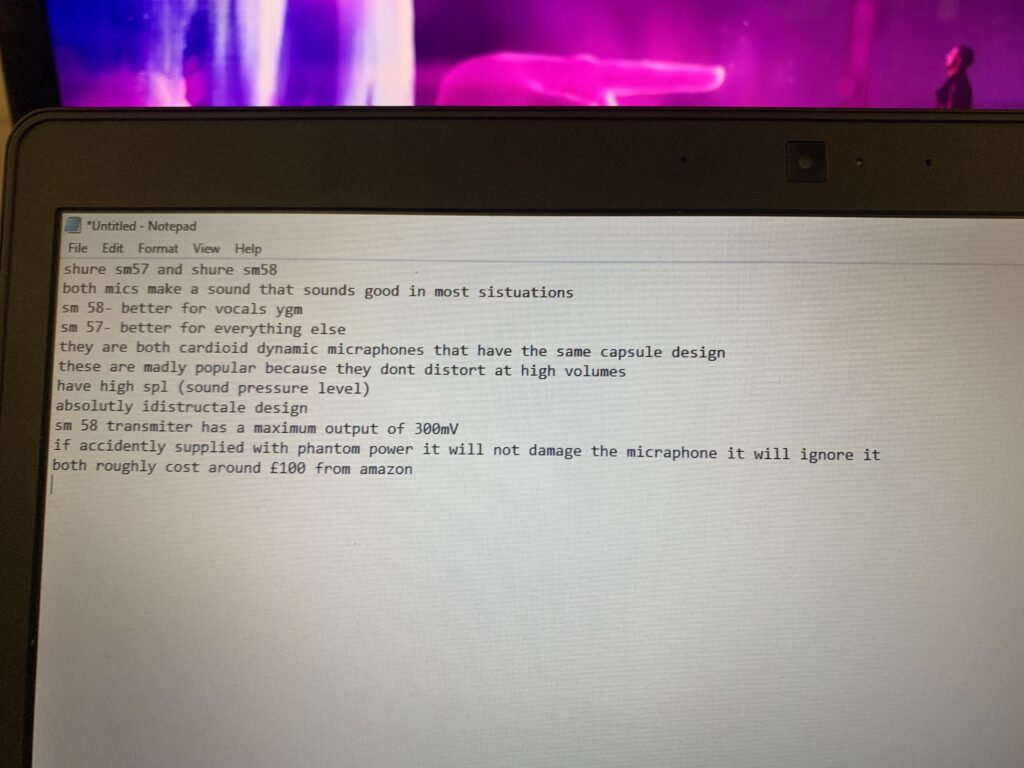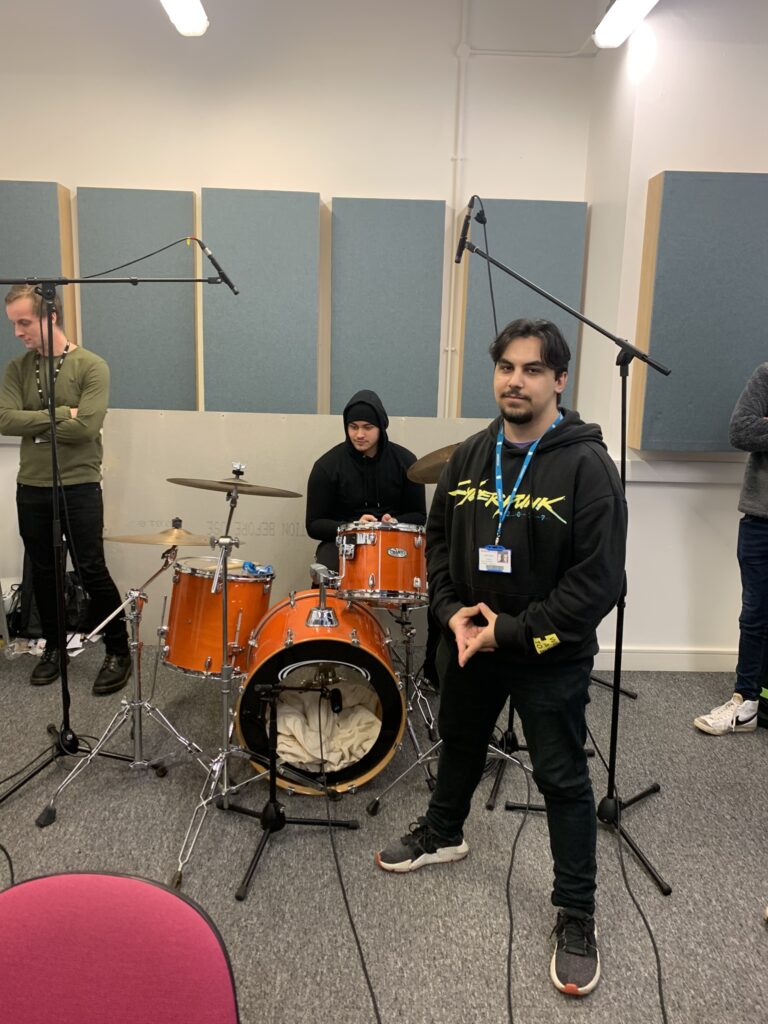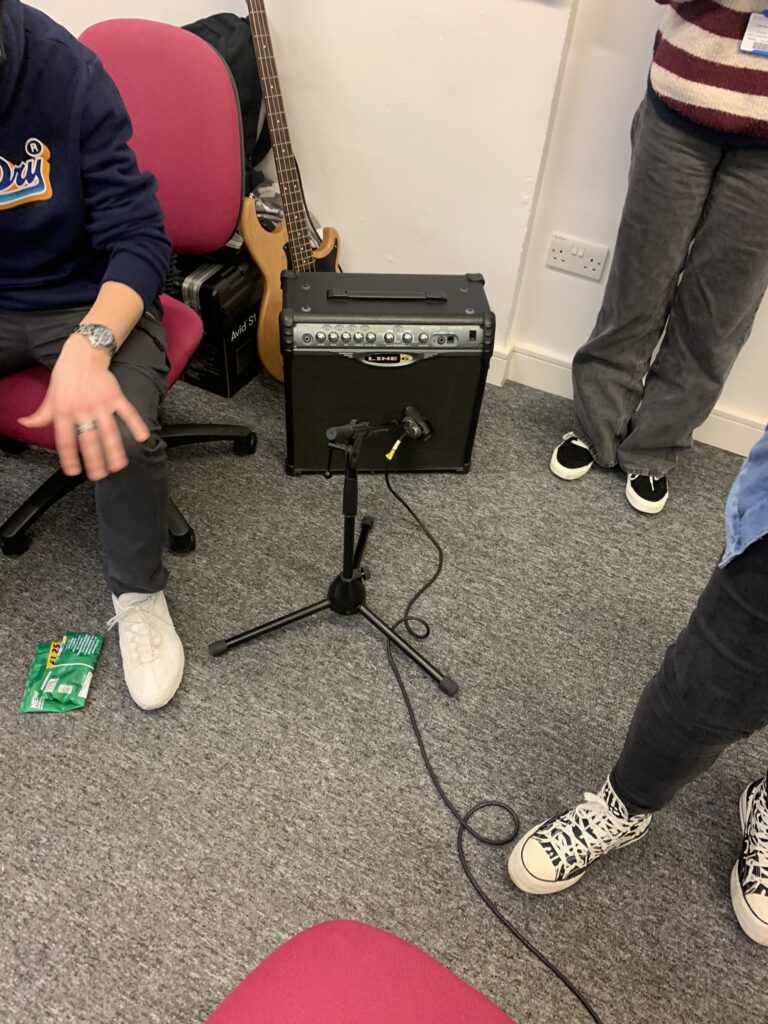
This is the research me and Jozef did when we were learning about microphones and different types like the condenser microphones, dynamic mics and we just touched on ribbon mics too. We then presented this for the class.
There are two main types of microphones, there are dynamic mics, condenser mics.
The main two microphones used are condenser mics and dynamic mics, ribbon mics were used for radio shows in the past but have since been replaced with better and newer models like the dynamic mics or in some cases even the condenser microphones.
Condenser and Dynamic microphones have distinct differences,
Dynamic microphones: They turn sound waves into a voltage with the use of a magnet. They essentially work like speakers but in reverse. In a speaker, electricity vibrates the diaphragm*, which creates the sound waves. Dynamic microphones on the other hand use the sound waves that vibrate the diaphragm and create electricity, which is then increased with the use of a transformer, and sent to the mic’s output, creating sound.
Condenser microphones: They work on the principle of variable capacitance. In simple terms, they work as a battery. Sound waves vibrate the diaphragm with a magnetic plate that’s behind it. When this happens, it creates a boost of voltage which is sent through a phantom power supply (+48V) to increase it then sent to the output of your microphone. Without this phantom power supply, you’ll have little to no signal since the voltage won’t be boosted. Some condensers can also have a built-in high pass filter, built-in pads, and a switch to change the polar pattern.
*Diaphragm – They’re essentially tiny speakers, consisting of a thin sheet usually made of plastic, a magnet, and a coil which is the electrical conductor. Acoustic energy causes the diaphragm to vibrate which in turn creates voltage.
Diaphragms have two sizes, So they have different intended uses,
Small diaphragm microphones (you might also hear the term “pencil” microphones) are great at picking up higher frequencies and are really good at keeping a consistent polar pattern due to the size and weight. That’s why you will generally see these as room microphones, on snare drums, pianos, or acoustic guitars.
Large diaphragm microphones have a larger, less consistent polar pattern and also have a higher sensitivity which provides a larger sound. These are the microphones you’ll usually see when someone is recording vocals, bass drums, or sometimes a live room to get a more vintage tone.


We also recorded the guitar with the (AKG D440) dynamic mic.We also recorded bass but because these mics don’t pick up the ambience of a bass guitar, so we recorded it in through an audio interface.